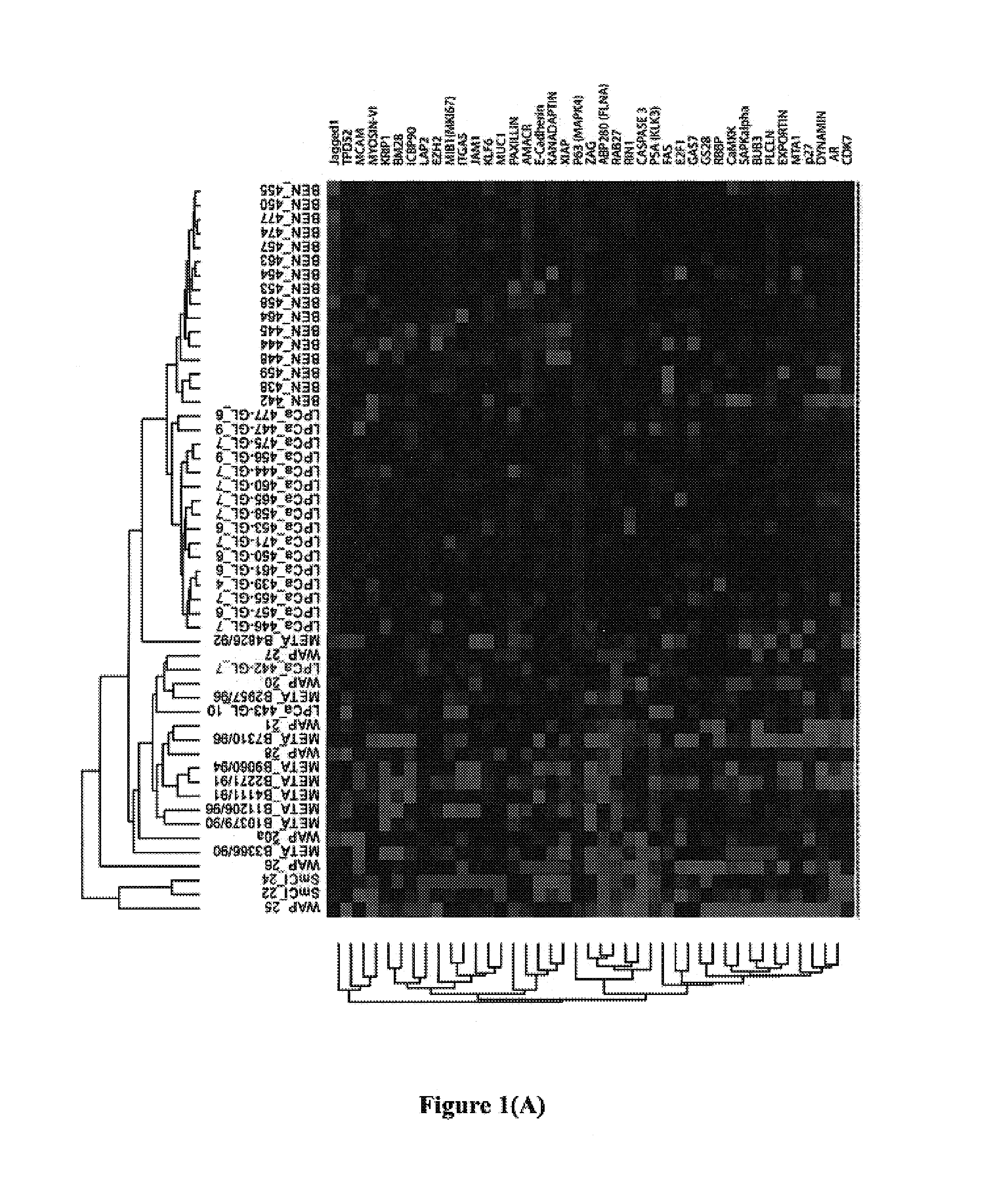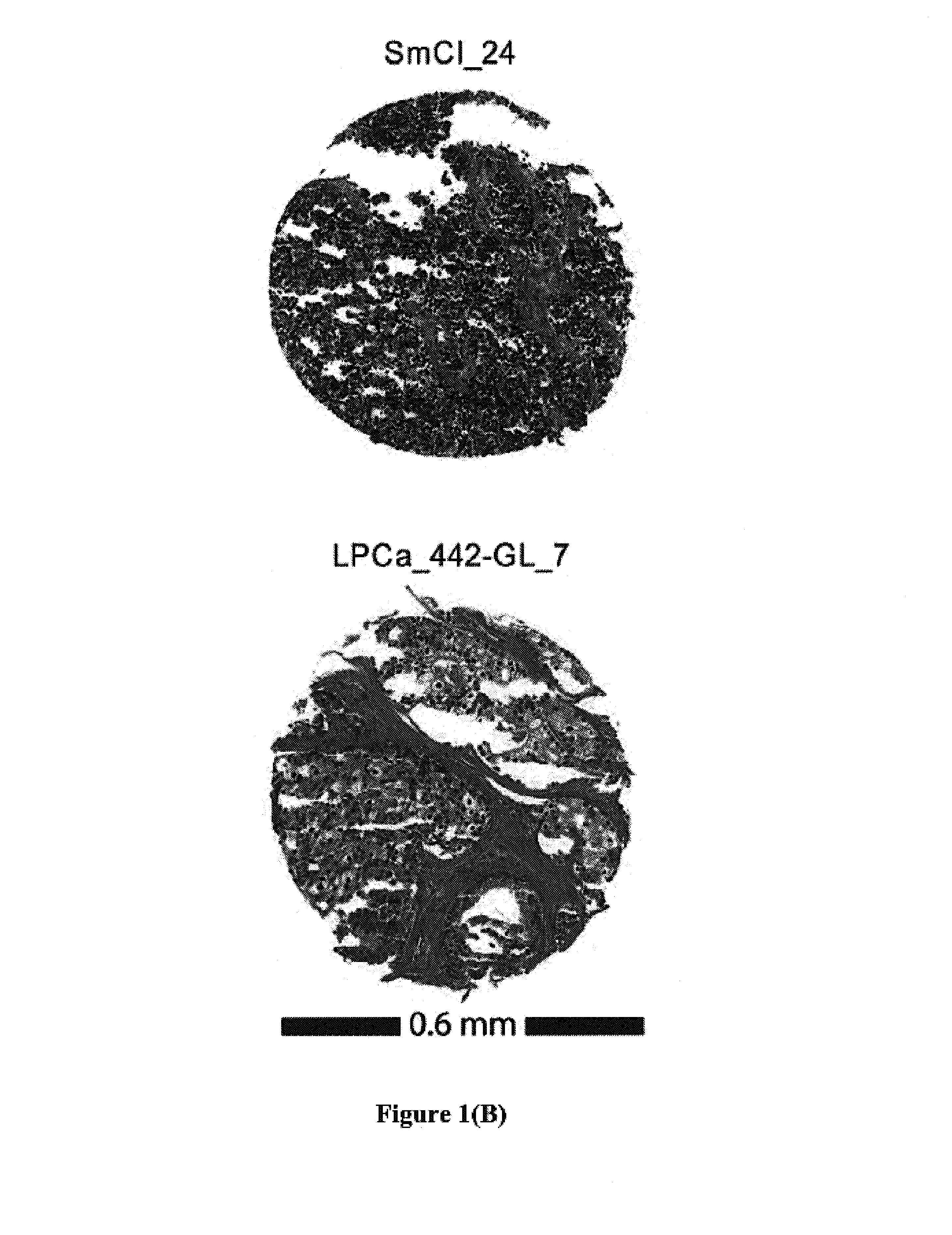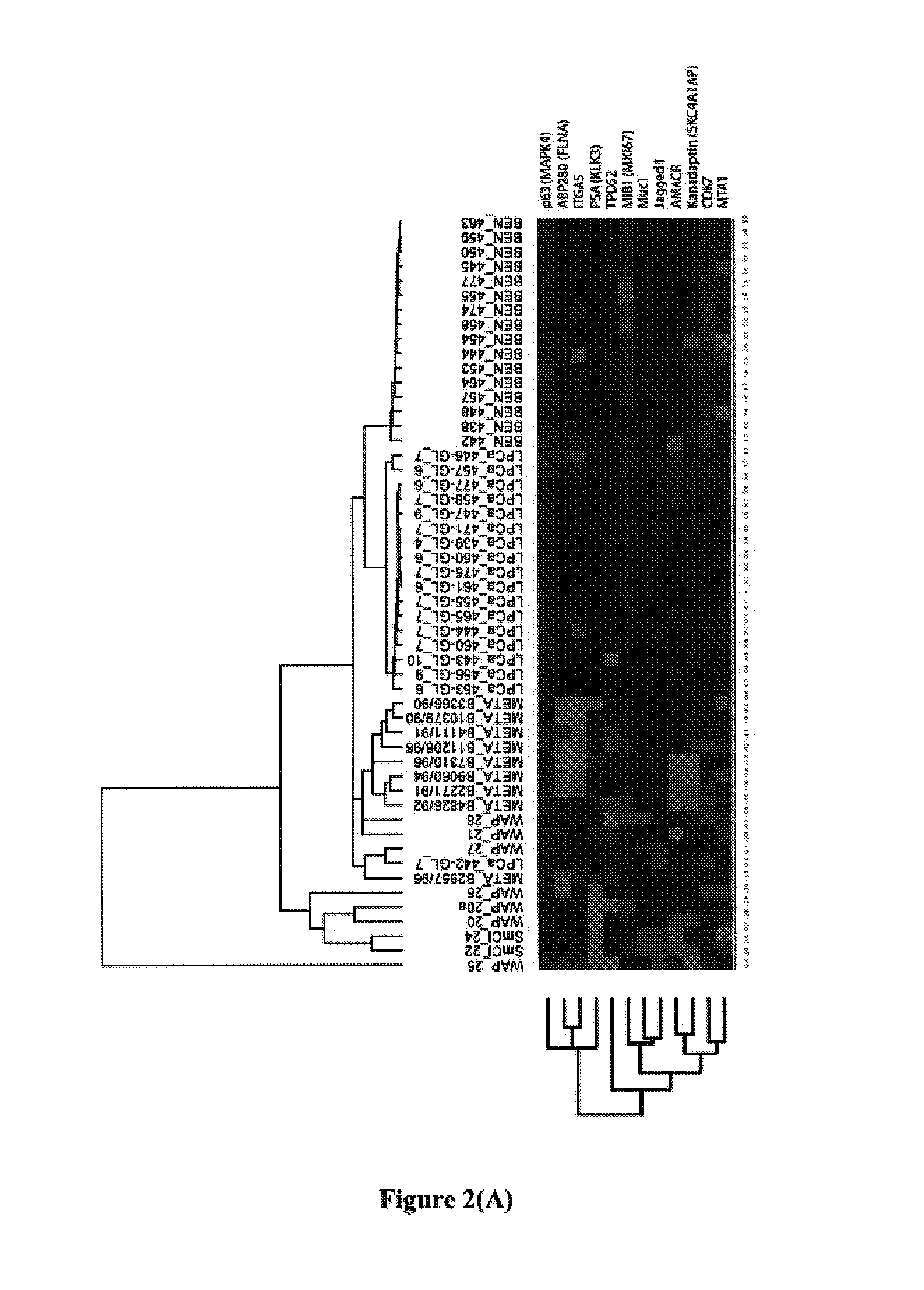Biomarkers for predicting prostate cancer progression
a prostate cancer and biomarker technology, applied in the field of biomarkers for predicting prostate cancer progression, can solve the problems of more aggressive treatment, limited other models, and subjective criteria used in current watchful-waiting protocols
- Summary
- Abstract
- Description
- Claims
- Application Information
AI Technical Summary
Benefits of technology
Problems solved by technology
Method used
Image
Examples
example 1
12 Gene Model
Materials and Methods
Case Selection
[0110]A prostate cancer progression microarray (TMA) has previously been developed in the Applicants' laboratory in order to test biomarkers (M. A. Rubin et al., Am. J. Pathol., 2004, 164: 831-840, which is incorporated herein by reference in its entirety). This TMA is composed of benign prostate tissue, localized prostate cancer, hormone naïve, and hormone refractory metastatic prostate cancer. These cases came from well-fixed radical prostatectomy, lymph node, and metastatic prostate cancer specimens from the University of Michigan (Ann Arbor, Mich.), the University Hospital Ulm (Ulm, Germany), and the rapid autopsy program University of Michigan Specialized Program of Research Excellence (S.P.O.R.E.) in prostate cancer (M. A. Rubin et al., Clin. Cancer Res., 2000, 6: 1038-1045, which is incorporated herein by reference in its entirety). All samples were collected with prior Institutional Review Board approval at each respective inst...
example 2
Validation of the 12 Gene Model
[0138]The 12 gene model disclosed herein (which consists of ABP280 (FLNA), AMACR, CDK7, ITGA5, JAGGED1, KANADAPTIN, MIB1 (MKI67), MTA1, MUC1, p63, PSA(KLK3), and TPD52) and a 9 gene model consisting of AMACR, ITGA5, CIAP, KRIP1, DRBP76, OCCLUDIN, BM28, P62 and LAP2, were evaluated using a Swedish Watchful Waiting Cohort.
[0139]The Swedish Watchful Waiting Cohort used in this evaluation is the largest population-based watchful waiting cohort, and consists of patients from Örebro, Sweden and the Southeast region of Sweden with clinically localized prostate cancer, who underwent watchful waiting as initial therapy. This cohort initially described in 1989 (J. E. Johansson et al., Lancet, 1989, 1: 799-803) consists of men who all presented with voiding symptoms referred to the urology department to rule out the diagnosis of prostate carcinoma. From 1977 to 1991, 1498 patients were diagnosed with prostate cancer (240 in Örebro and 1258 in the Southeast region...
PUM
| Property | Measurement | Unit |
|---|---|---|
| diameter | aaaaa | aaaaa |
| PSA | aaaaa | aaaaa |
| time | aaaaa | aaaaa |
Abstract
Description
Claims
Application Information
 Login to View More
Login to View More - R&D
- Intellectual Property
- Life Sciences
- Materials
- Tech Scout
- Unparalleled Data Quality
- Higher Quality Content
- 60% Fewer Hallucinations
Browse by: Latest US Patents, China's latest patents, Technical Efficacy Thesaurus, Application Domain, Technology Topic, Popular Technical Reports.
© 2025 PatSnap. All rights reserved.Legal|Privacy policy|Modern Slavery Act Transparency Statement|Sitemap|About US| Contact US: help@patsnap.com



